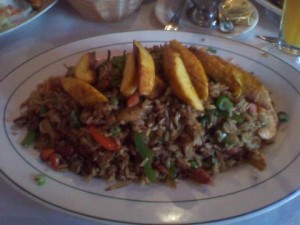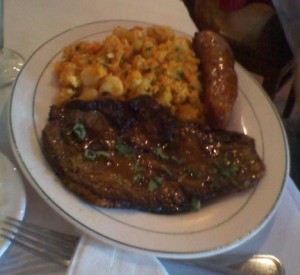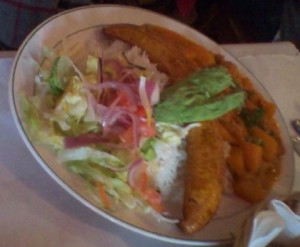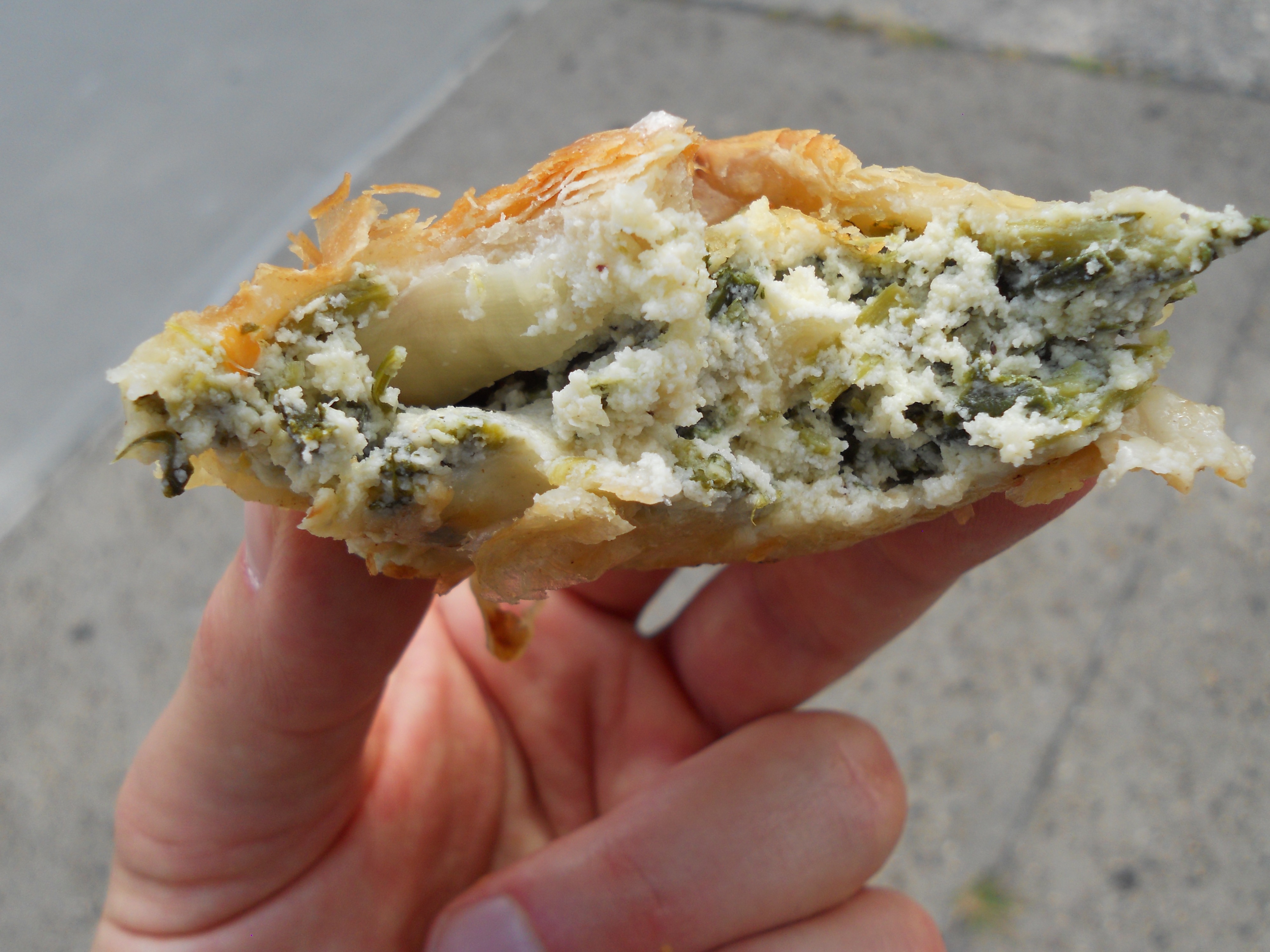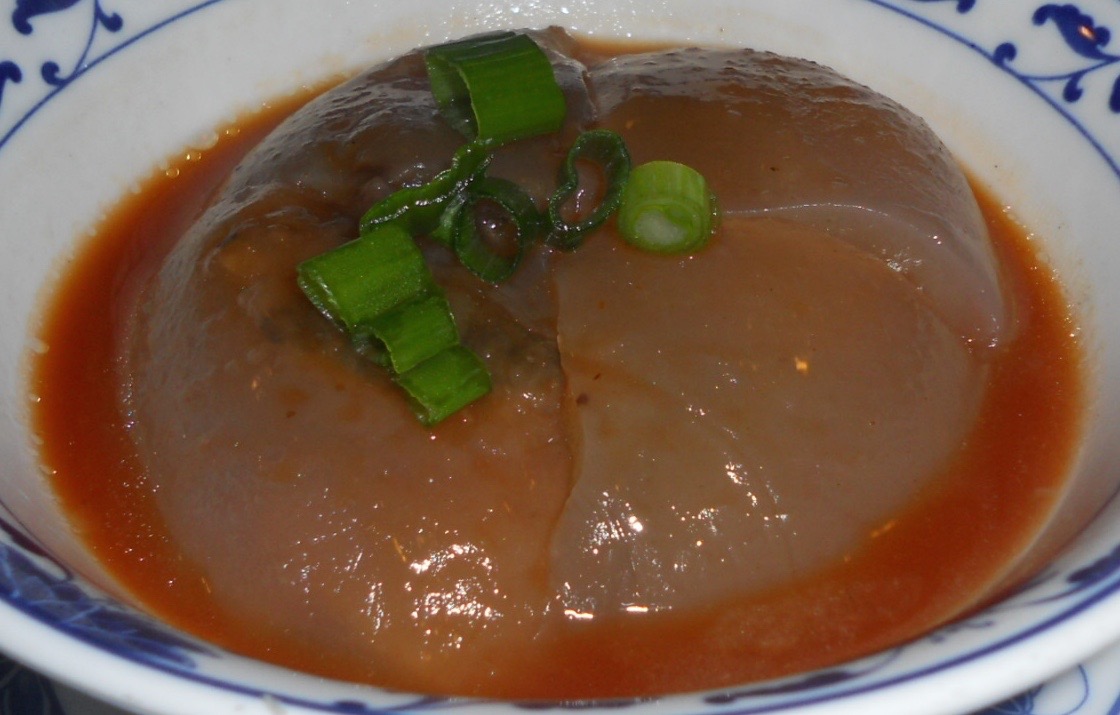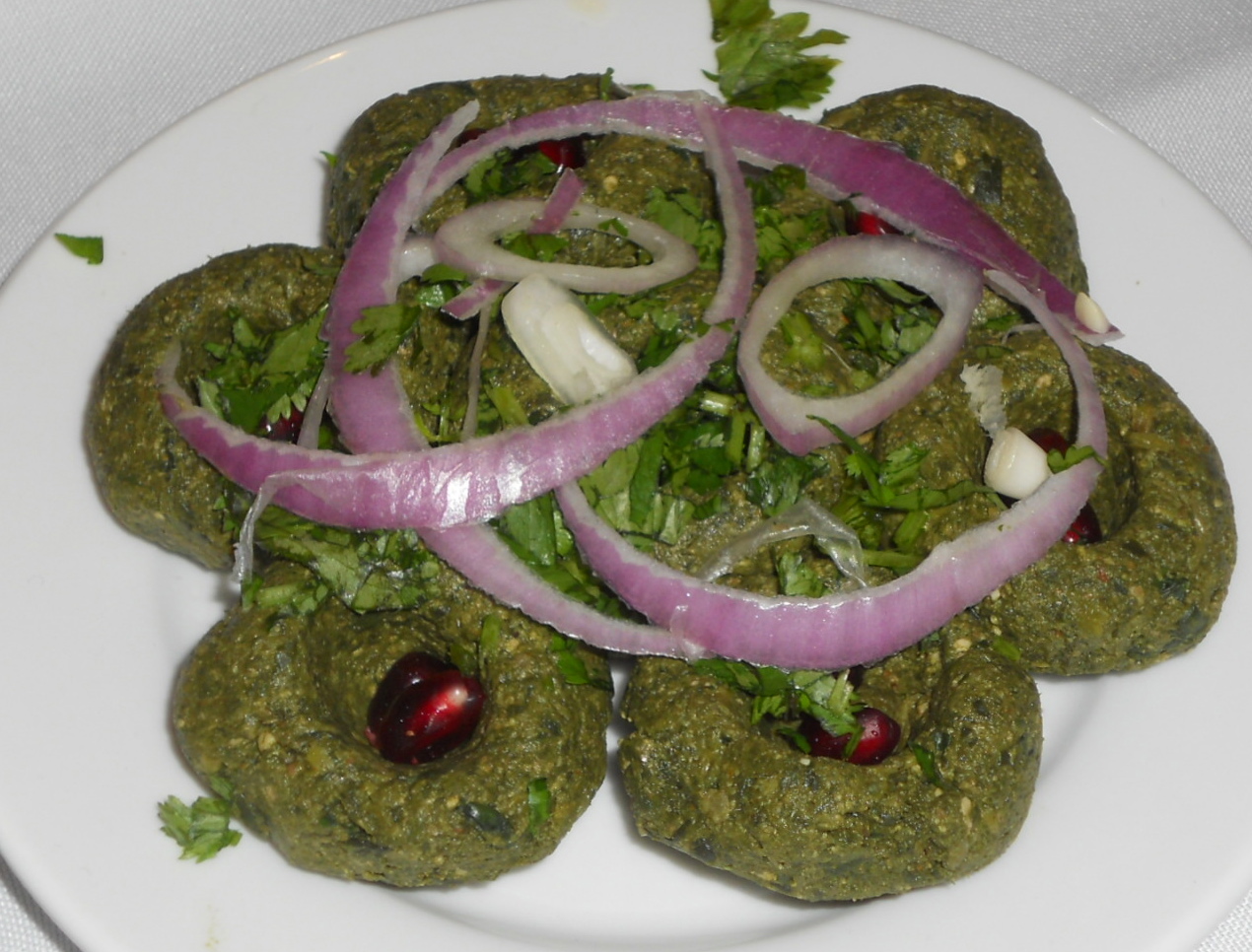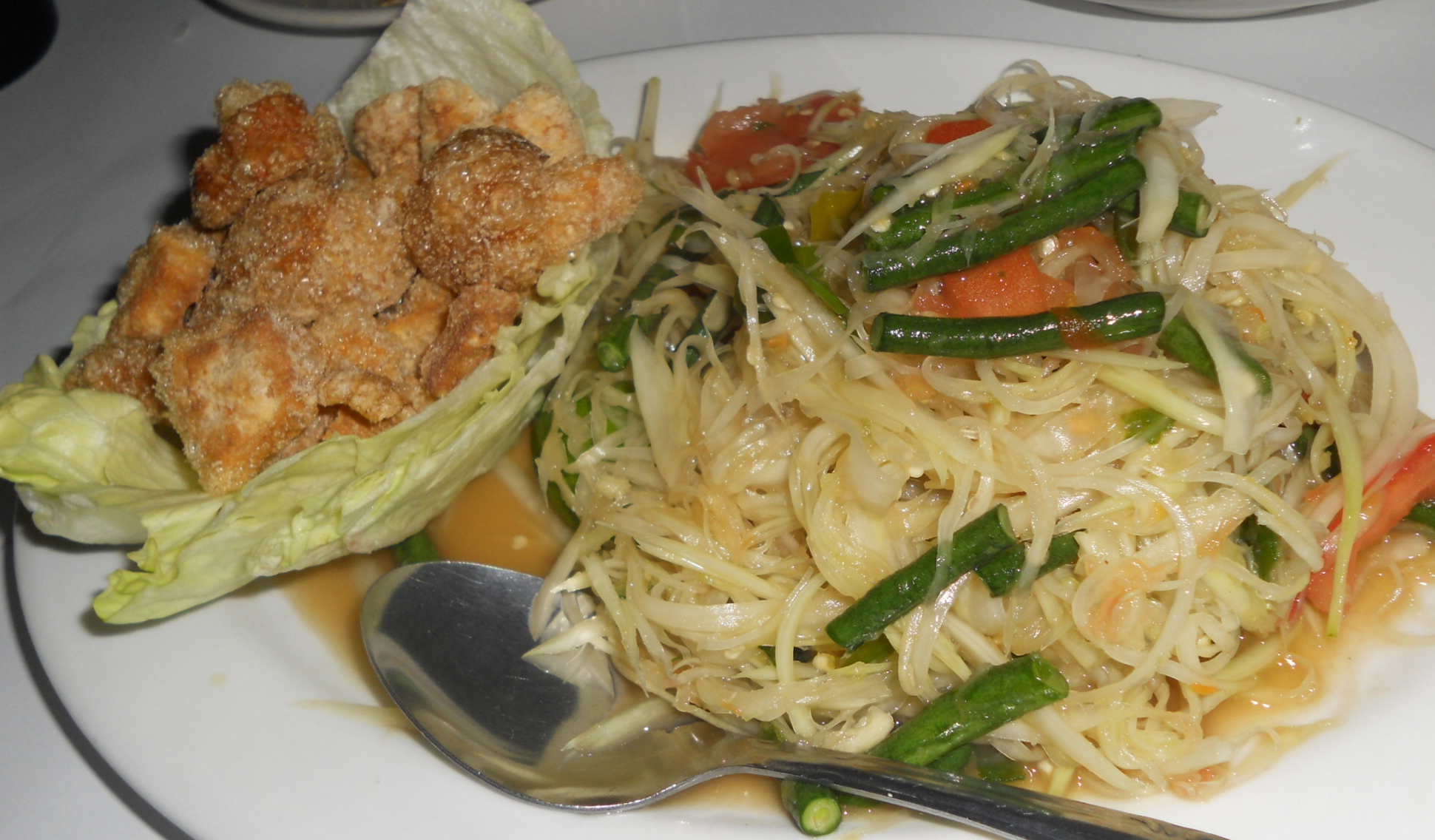There is absolutely no reason why I started with Ecuador, other than the fact that my girlfriend had already made lunch plans with an Ecuadorian friend of hers today. Since I’m lazy, I thought I’d let somebody else (luckily, a real Ecuadorian) do the food-hunting for me. Our lovely friend Andrea called her father, who insisted that Corona’s Mitad del Mundo has NYC’s finest Ecuadorian cuisine.
Before I continue, a disclaimer: once upon a time, I spent a month in Ecuador on a deeply dysfunctional tour with a bizarre modern dance company. I wasn’t particularly impressed with Ecuadorian food during the trip, and I now realize that I got the total shaft, at least from a culinary perspective. During our three weeks in Quito, we ate a continental breakfast in our hotel pretty much every morning, ate lunch at our sponsor’s café every afternoon (all I can remember was the ceviche, which was invariably amazing… and, for some reason, served with popcorn), and I can barely remember any of the dinners. I think we ate Clif Bars when we didn’t have time for much else; if we weren’t buried in rehearsals or performances at night, we probably went out for empanadas or burgers or Chinese food. Aside from the ceviche, I didn’t eat anything that I couldn’t get in most other countries in the world. Sad, right?
After the tour was over (all I really need to say about the dance tour is that A) there were four directors and only five “rank-and-file” dancers, which was a recipe for disaster, and B) our only full dress rehearsal ended in a bilingual shouting match among three directors—none of whom were actually bilingual, and C) thousands of Ecuadorians have seen my penis), I ran away to a little fishing village near the Colombian border for a week. For breakfast every morning, I ate rice, eggs, and fried plantains. For lunch, I ate rice, fish, and fried plantains. For dinner, I ate more rice, more fish, and more fried plantains. My diet didn’t vary at all for a full week. I gained five pounds, and was very happy.
And I apparently learned nothing at all about Ecuadorian food.
With some coaching from Andrea, we ordered the three dishes that were, in her estimation, the most “typical” Ecuadorian options on the menu. I recognized exactly none of them. That should be conclusive proof that I completely blew it when I was in Ecuador.
I ordered the chaulafan ($11), which is Ecuador’s version of fried rice. It had an unholy mixture of shrimp, pork, chicken, chorizo, onions, peppers, plantains, and other random bits of vegetable and animal. It seemed like the sort of dish that starts as a household inevitability (“let’s fry random scraps of whatever we have with some nice, cheap rice, and pretend that it’s a full meal”) and grows into a beloved national staple. It was pretty darned tasty, if not terribly remarkable—if it weren’t for the chorizo and plantains, it would be nearly indistinguishable from some of the fried rice variations served in Chinese and Vietnamese restaurants all over the globe. I definitely enjoyed the dish, but it really wasn’t much of a story.
My companions were much smarter than I was. My girlfriend ordered a tasty little number called mote pillo ($11.95), which
consists of massive chunks of white hominy (imagine a bloated version of Mexican posole if you’re familiar with it; otherwise, just picture nickel-sized kernels of chewy white corn) fried with eggs and little flecks of tomatoes, onions, and peppers. It wasn’t the prettiest pile of food, but it was huge… and really, really tasty. Easily three-fourths of the dish was corn, but the eggs held it all together, and there was just enough spice to the eggs to overcome the blandness of white corn. I absolutely loved it, and ate an embarrassingly large amount of Amber’s plate.
We did a thoroughly crappy job of reading the menu, and didn’t realize that the mote pillo came with a steak and a large chorizo. So in addition to the epic plate of corny stuff, Amber was staring at about a pound of meat. Awesome.
I don’t have a whole lot to say about the meat itself. In much of Latin America (Argentina is a notable exception), steaks are often broad and paper-thin, and are usually cooked too well for my taste. This one was no exception; it had a nice charred flavor to it, but was a wee bit too chewy. Most Americans would be a little bit disappointed in that part of the dish. Chorizo, for its part, is awfully tough to ruin. Mmm… spicy pig intestine. All good there.
Andrea, as our token Ecuadorian, ordered something that would terrify most Americans: guatita ($9.95), which translates roughly as “little belly.” So, um, yeah… belly and other intestinal bits, stewed in a bright orange sauce.
Believe it or not, I’ve eaten a lot of pig stomach in my life. Virtually every time I’ve traveled outside of the United States, one of my local companions inevitably gets an evil glint in their eye at a restaurant or roadside stand, and decides to introduce me to a local delicacy of some sort. Often, these delicacies involve animal parts that Americans don’t usually eat. I’ve had plenty of intestines (I actually liked the rice noodle-stuffed pig intestines served on the streets in Korea), an occasional encounter with heads or hooves (I now know for certain that boiled, chilled pig’s feet with chile sauce is NOT my thing), and a fair amount of stomach. I could never quite get over the texture, honestly. Way too chewy, though I had a spicy stomach dish in Spain once that had an astoundingly tasty sauce. Too bad I couldn’t handle anything more than dipping my bread in it. (Yeah, fine, I’m a wuss.)
Mitad del Mundo’s “little belly” was actually the best I’d ever had. The sauce was a mildly spicy goo made primarily from pureed potatoes, peanuts, peppers, and onions, and it was pretty darned nice–the peanuts were far from overpowering, and I actually thought that the sauce was some sort of spicy squash-based stew until told otherwise.
The impressive part? The belly was actually chewable. Chewable belly… I had no idea that it was even possible. Andrea explained that Ecuadorians are more patient than other nationalities, and that stomachs are stewed literally for days before being chewed.
So if I have any complaint about Mitad del Mundo, it would probably be that the service is a little bit unfriendly and indifferent. Otherwise, two thumbs up for this place. Mote pillo is the sort of dish that I would eat over and over and over again…or at least, I would eat it every damned day if I wasn’t worried about turning into a blimp. I’d be lying if I told you that I would ever eat stomach with any regularity, but I at least have to give the place some credit for cooking up a version that didn’t make me squirm like a piglet in a sausage factory.
Mitad del Mundo Restaurant (no website)
10410 Roosevelt Ave., Flushing, NY
Subway: 103rd Street – Corona Plaza station (7 train)


